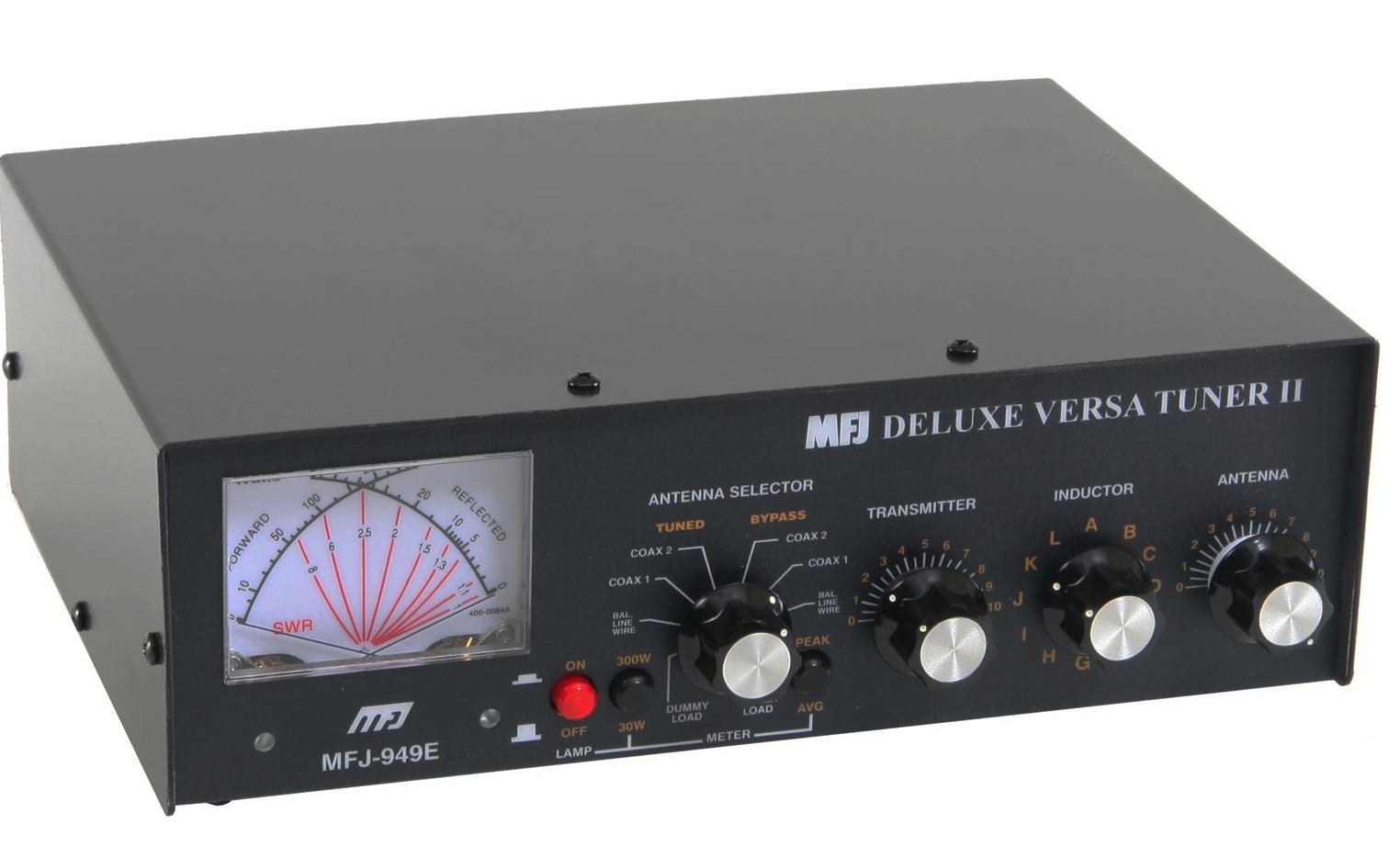

The coil form is a plastic container used for coins. I asked for one in a local bank and got it for free. Make 6 taps every 2 turns beginning from one side then make 6 more taps beginning from the other side.ĭiameter is 26 mm (1 inch) length is 60 mm (2½ inch). Length of winding is 28 mm (about 1 inch). Lout is not grounded.ĥ turns 0.6 mm (22 AWG) on center of LoutĢ6 turns 0.6 mm (22 AWG). Inductance is less if Cout is connected to one of the inner Makes tuning at high frequencies easy because the Lout As an additional feature, Cout can beĬonnected to any pair of taps by alligator clips. The balanced output terminals can be connected to any The balanced output circuit consists of Lout and Cout. The tuner's input circuit is unbalanced and it consists of Cin and Lin. YouĬan monitor how each twist of a knob affects the SWR. Is useful when the antenna tuner is being adjusted.

Mark the "3" deflection on the meter scale. "2" mark. Insert a 150 ohm resistor, repeat the procedure, and Now replace the 50 ohmĭummyload with a 100 ohm resistor and repeat the procedure. This is marked as "1" on the meter scale. SWR is 1:1 (Input impedance is 50 ohm and the dummyload is 50 ohm). 4 should be zero (or close to zero) because the Set marks at 15 W, 10 W, 5 W, 2 W and 1W. The remaining scale is marked with a thin pen. Adjust the 22 kohm trimmer to set the needle at 2 and apply exactly 20 WĪt 28 MHz (or lower) to the input terminal. ThisĬalibration requires that the output of your power source can be I have set marks at 4 W, 3 W, 2 W, 1 W, 0.5 W and 0.2 W. The remaining scale is marked with a thin Set the METER switch in pos. 1 and apply exactlyĥ W at 28 MHz (or lower) to the input terminal. The power meter is simple to build and has low insertion loss and good accuracy. The Stockton power meter was originally described by G4ZNQ David Stockton in SPRAT (the journal of G QRP Club). REV: Measure reverse power (reflected power)Īdjust to maximum meter deflection when the METER switch Maximum meter deflection is 20 W.įORW: Measure forward power (input power) Maximum meter deflection is 5 W.Ģ0W: Measure power. Position Dummy load: input goes to dummy load via Stockton Power MeterĥW: Measure power. Position Tuner: input signal goes to tuner via Stockton Power Meter
HOMEMADE ANTENNA TUNER TV
If you can't get TV reception with an indoor antenna, a gain amp may not actually help you, and in other cases, it could make your reception worse by overloading channels that already have a strong signal.My homemade antenna tuner has three functions: Based on our experiences in a number of locations, however, amplifiers offer a wildly unpredictable signal strength benefit. While the 1byOne will also work without the amp attached, the Channel Master won't.
HOMEMADE ANTENNA TUNER PLUS
It's worth noting that some of these antennas - the 1byOne and the Channel Master Smartenna Plus - include gain-boosting amplifiers. Did the antenna have a long, high-performance coaxial cable or, even better, a detachable one? You'll be sticking one of these in your window, which could be a long way from your TV, so longer is better. Most of the TV antennas are based on the same rectangular design, but there was one important consideration: the cable. While the results will vary depending on where you live and how far you are from TV towers, we found that the best-performing models received more of the most popular channels as well as local channels and additional radio broadcasts and Spanish-language stations.

In addition we added popular channels CBS 2.1, WNBC 4 (NBC), and WNYW 5 (Fox). Our list of "problem" channels in Manhattan was WABC 7.1 (ABC), WNET 13.1 (PBS), WPIX 11.1 (CW - Manhattan only) and WNJB 58.1 (PBS - NJ only).


 0 kommentar(er)
0 kommentar(er)
